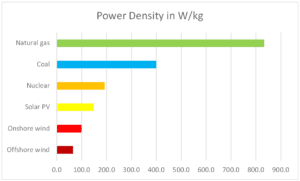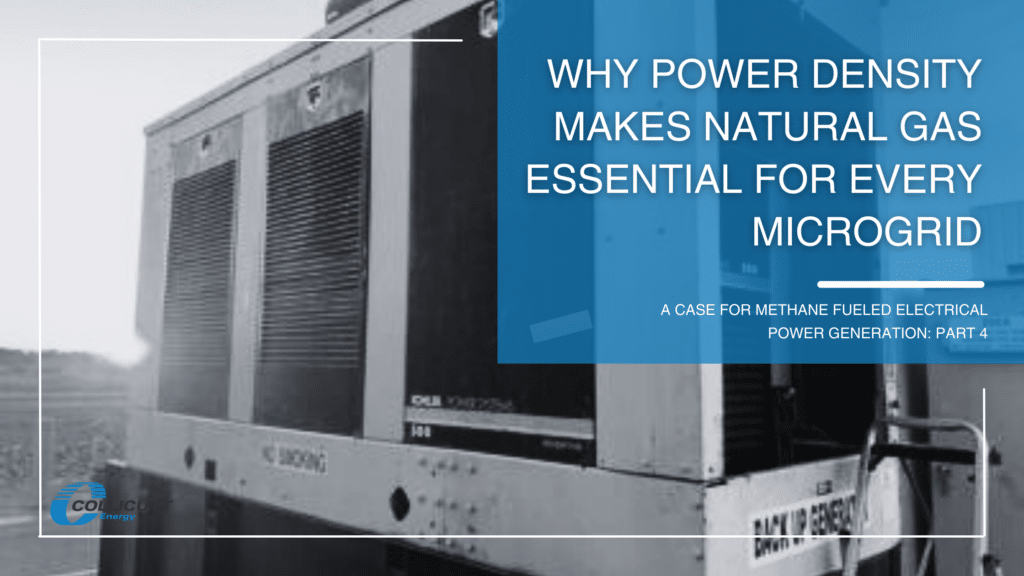Why Power Density Makes Natural Gas Essential for Every Microgrid
Defining Power Density
Power density, typically measured in Watts per kilogram (W/kg), refers to the power created per unit of material required to produce that power. It provides a metric for assessing the resource intensity of various power generation methods.
Essentially, a high W/kg rating means that the power generating device creates more power per kilogram. A low W/kg rating means that it takes more material (e.g., cost and complexity) to create a Watt of power.
Comparing Power Densities of Various Energy Sources
The following chart is a screen shot from the International Energy Agency (1) and it illustrates the vast difference between the mass of material required to produce a unit of power for various energy sources. This chart is shown in kg/MW to illustrate the amount of specialty materials required to generate a MW of power.

If we take the inverse of these numbers, we get the power density graph that is shown below in W/kg.

As you can see, natural gas power generation has the highest power density of the six power sources shown. In fact, it has approximately 5.5 times more power density than solar PV and approximately 13 times more power density as offshore wind power!
Besides taking less mass to produce a unit of power, natural gas power generators have a smaller footprint, can be placed almost anywhere in a microgrid system, and can be designed to have a relatively fast ramp up time.
From the above, it’s evident that while renewables like solar and wind may be important for a sustainable future, their lower power densities mean they require more substantial physical footprints to match the output of fossil fuels. This is where the strategic use of natural gas can provide a balance.
Why Power Density Matters for Microgrids
Microgrids, especially those serving urban areas or critical facilities, often don’t have the luxury of vast expanses of space. Thus, power density becomes a critical consideration. Natural gas generators, with their high power density, can deliver significant power from a compact infrastructure, making them especially suited for space-constrained microgrids.
Moreover, natural gas generators can efficiently address the intermittency of renewables. On days when the sun isn’t shining or the wind isn’t blowing, the high power density of natural gas can ensure that the microgrid’s energy demand is met.
Conclusion
Power density is a pivotal metric when planning a microgrid’s energy mix. While renewable energy sources bring benefits, their lower power densities necessitate complementary power sources with a compact footprint and high output. Natural gas generators fit this bill perfectly, making them indispensable for microgrids aiming for resilience, efficiency, and sustainability.
If you have any questions regarding this article or if you have a microgrid or power project of any kind that could benefit from a methane powered generator, give us a call at Collicutt Energy at 888.682.6888. We have a team of experts that will work with you to evaluate your project and determine the best fit solution for you.

